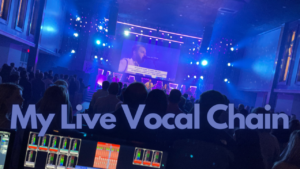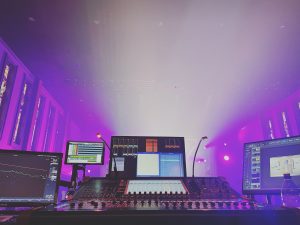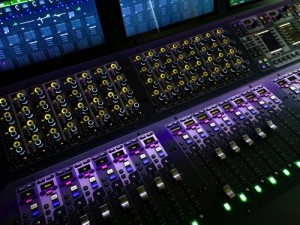
Mixing Mindset: Near and Far

My good friend, Jason Cole was in town recently and came out to a service so afterwards we were obviously chatting about the mix. Jason said the service all sounded great, but one thing he mentioned is he would have used a longer reverb on the closing song we did. So I explained to him why I decided to use the reverb that I did.
This got me thinking that maybe it might help some of you guys reading these musings to hear about how some mix decisions get made. Robert Scovill recently wrote a great article over at Heil Sound on how aspiring engineers should focus more on learning about music and not just the gear that makes it happen. So I thought maybe I’d try and start delving into some of the things that go through my head when I’m putting together a mix, and I’ll try and post examples whenever possible.
Now as I’m talking about this kind of stuff, you might not agree with my interpretations of things or hear things the way I do. That’s OK. You should hear things the way you hear things. The point I want to make with this kind of an article is that there is a why to the mix decisions I’m making. I’m not just throwing up faders so you can hear everything. However, at the same time keep in mind that what I’m doing comes from a musical place so it’s much more intuitive for me than trying to write about this will make it seem. I don’t stand at the console thinking about this stuff. I might listen over and over and over again, but more often than not I’m responding to what I’m hearing. Articles like this one will be an attempt to verbalize that instinct as much as possible.
So, let’s start with that closer we did. The song was called Reason to Sing and was originally released by All Sons and Daughters. We performed it stripped down with just piano, acoustic guitar, and a couple vocals. You can listen to the FOH mix embedded here, although, depending on how you’re reading this, you might need to head over to my actual website for the stream.
In The Meantime -Part 1 – Closer from North Point Online on Vimeo.
[audio:/reasontosing/reasontosing.mp3]Context is a big deal to me when mixing. It starts with the context of the song itself. In other words, what was the song originally conceived to be? What is it trying to say? How should it make the listener feel?
Then there’s the context of the performance. How is the song actually being played and sung?
When it comes to cover tunes, though, the reality is that performance context doesn’t always match the original conception of the song. For example, have you ever noticed how singers on singing contest shows like American Idol and the Voice smile a lot no matter what the song is? This seems to be most prevalent in the early stages of the show, and then most of those people get eliminated.
The problem I see and hear in a lot of these shows is singers being handed songs they just don’t understand, and the tone of their performance doesn’t match the intended tone of the song. For example, whenever I see people smiling when they sing Faithfully by Journey, it drives me nuts because I feel like they don’t understand the song. That song is not a happy song. It’s about being homesick. It’s about the pain of distance in a relationship and enduring that distance. There’s a reason why the line “We all need the clowns to make us smile” is in there; it’s because it’s not a smiley topic and not a happy time. The song is hopeful in the end, but it’s not a happy song. When I listen to Steve Perry’s original vocal, I hear a desperation in it, and you can see this on his face in some of the live videos floating around the interwebs.
So, in terms of mixing, the context of the performance is important because as a mixer I need to figure out which context to push the mix towards. Do I get behind the performance, right or wrong, or do I try and steer the song back towards its intended context?
Then there’s the larger context of how the song will be heard. In the case of a live mix: Is this is a one-off performance? Is it part of a set of music? Will the audience likely be participating? Is the audience going to be sitting or standing and listening? Etc. etc. etc.
So, in the case of Reason to Sing, we had a single song to be played at the end of the message in our service. The message was the first of a new series titled In The Meantime about what to do when you’re stuck in a situation where you feel like nothing is happening and God isn’t saying anything. When I was starting to mix the song, I didn’t know exactly how the message was going to land, but I knew the series was probably going to be a heavier topic and we’d probably be coming out of a serious moment.
I spent a lot of time with the song in virtual soundcheck trying different things even though it is a very simple mix in terms of instrumentation. I find transitioning to music out of a message is always a challenge for a couple reasons. For starters, the level of speech towards the end of a message is typically pretty low. Most of our speakers start their messages wide and narrow and focus in towards the end of their messages. As they do this their tone and volume tends to get more subdued so by the end things are quiet and more intimate.
The other challenge going into music is acoustic space. Spoken word in our rooms is always as dry as can be, but music has different needs. So the challenge is transitioning from bone-dry speech to a wetter music without calling attention to the music’s space.
A big part of my virtual soundcheck experimentation for this song was spent on effects. I initially tried some longer and wetter settings, but they just didn’t feel right to me. I felt the song needed to be very intimate when it started. I felt this fit the context of where it was in the service and also fit the feel and tone of the song. It wasn’t supposed to be a performance song. The message of the song outweighed that.
In my opinion, the difficult thing about longer and larger reverbs is they tend to push things back and away. You can kind of counter this a bit using longer pre-delay times, but longer, audible reverbs still put things in a defined space. I initially wanted a natural space around the vocal, but I wanted the vocal more forward and the space not necessarily defined. I wanted the vocal to feel more like it’s just in the space of the room it was supposed to be heard in.
This brings up another thing I should mention. My mix was being sent to all of our campuses so I also knew that their unique acoustics were going to add in to the mix in those rooms. That doesn’t mean I wanted to leave everything completely dry, though. That just means I wanted things to be more subdued.
I used a mix of things for vocal effects on this song. I believe I had a 2 second plate, a hall that was a little longer than 3.5 seconds, and then a 1/8 triplet delay set to the tempo of the song. The predelay on the plate was probably in the 30ms range while the hall was probably more like 100ms-ish. I think I started with some of my own presets for the plate and hall, and I just made the hall longer. I didn’t spend a lot of time messing with the balance of the different effects. I think I started with just the plate and wanted a little more so I added the hall, and then I feathered the delay in with it all until I liked the blend. Then it was just a matter of how much of the overall blend I wanted.
I also had an additional hall I added to the second vocal that was probably in the 2 second range. I like doing this at times with backgrounds because it helps keep the lead in front of the backgrounds. You can see the blend I was using for all the vocal FX in the photo here.
I controlled all of the FX returns with a VCA which I used to ride them through the entire song. I started with them back a bit for that intimacy, and in the second verse brought everything up a bit as the song got fuller with the added vocal and acoustic. At this point the song moves into not just being about the lead vocal and the vocals felt like they needed to sit back into the whole thing a bit.
So, here’s something for me when I’m working with depth. I don’t necessarily approach depth in terms of giving someone the ability to localize a sound. Stereo in live sound doesn’t work the way it can when you’re sitting in the sweet spot of a great studio, so the 3D localization cues aren’t always there for a listener. For me depth is more about foreground, background, and the space in between. Using depth this way allows me to turn things up so they are loud without making them the main focus.
For example, in this mix I added reverb to the instruments. You can hear the before and after embedded here.
Instruments – Dry
[audio:/reasontosing/instruments-dry.mp3]
Instruments – Wet
[audio:/reasontosing/instruments-wet.mp3]
This kind of depth/reverb is often a subtle thing to me because it’s supposed to be subtle. When I’m approaching this in a mix, I’m often just trying to get things to feel right because when everything feels right the listener’s attention isn’t drawn to specific things. He just hears the song.
Another thing I should mention related to depth is the tone of the piano here. Personally, I gravitate towards brighter pianos, but on this song I left the piano darker at the suggestion of one of our music staff members. I think it was the right call, too, because leaving the piano darker helped put it behind her brighter vocal.
As the song moves into the bridge, its intensity builds. I had my hands on every element in the mix riding the instrumentation down a bit while also pushing the vocals up and adding more FX to them. The challenge here was to keep the instrumentation from completely overtaking the vocals. If I mixed this again I’d have pulled the piano back a little more, although, I like the intensity having it a little hot brings. It feels a little out of control to me, and I think that fits the song and performance in that spot.
When the song moves into the last chorus and the instrumentation drops back, I pulled the FX way back so the vocal is even drier than at the beginning of the song. I wanted it to feel like she was coming forward into the room at that point to really punctuate what she was singing because the performance is almost the equivalent of going from a shout to a whisper at that point. I felt like drying up the vocal there brings it almost right to your ear.
I think this is a good song to look at in this way first because it’s so simple. But simple doesn’t mean it’s easy or a free ride. If you’ve got any more questions about my approach on this song, please add them in the comments.


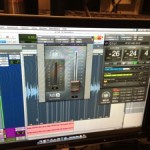 Previous Post
Previous Post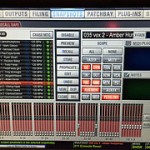 Next Post
Next Post